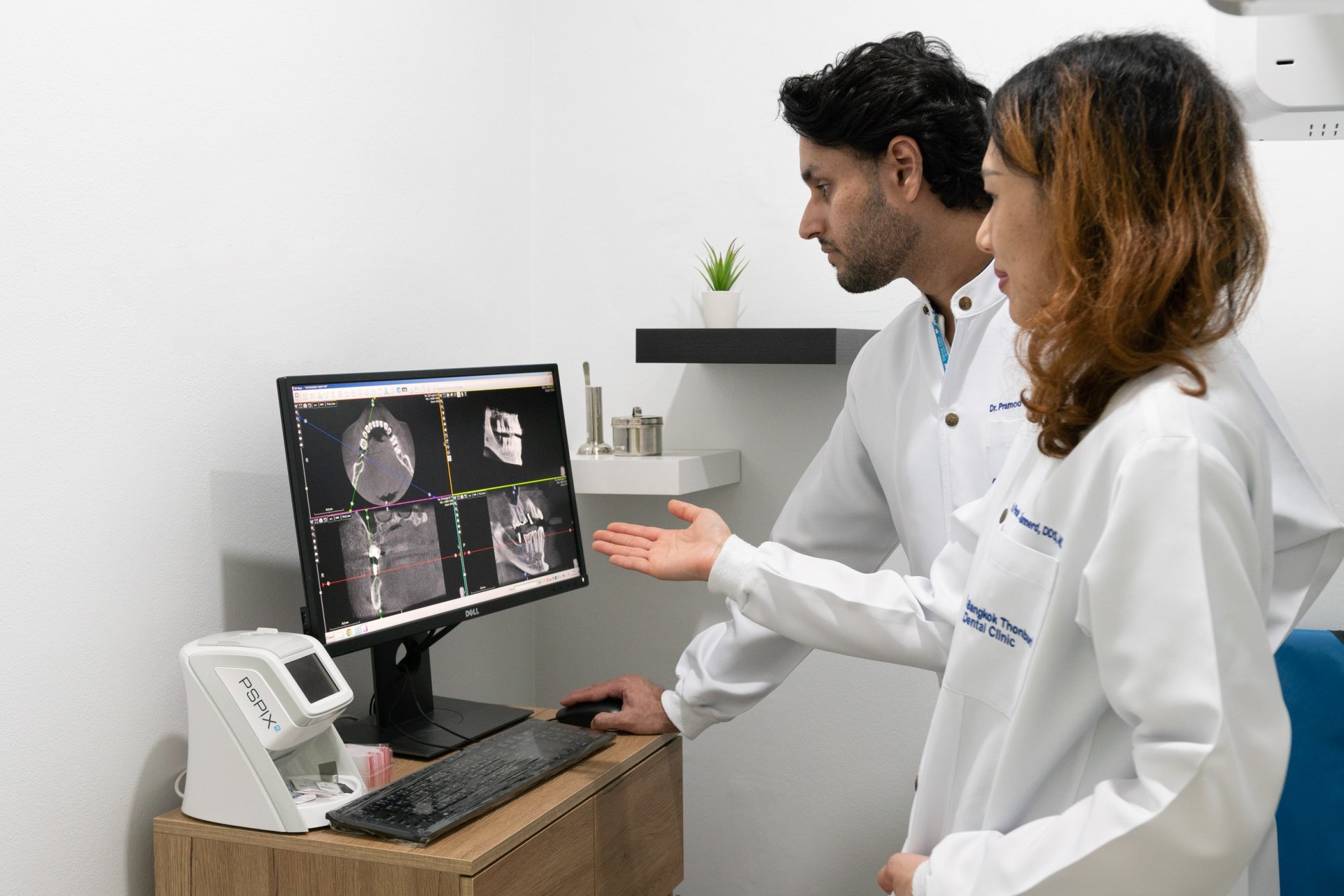How is 3D X-ray (CBCT) useful and important for dentistry ?

How is 3D X-ray (CBCT) useful and important for dentistry ?
3D X-ray or CBCT (Cone Beam Computed Tomography) is a three-dimensional X-ray technology used to create 3-dimensional images of the teeth, jawbones, and other structures in the mouth and face. It is very important in dentistry because it can provide highly detailed and accurate information about the structure inside the mouth and face, especially when used in cases where diagnosis with conventional X-rays (2-dimensional X-rays) is insufficient.
The importance of CBCT in dentistry
1. Dental Implant Planning
- CBCT allows dentists to view a three-dimensional image of the jawbone, enabling them to assess the bone structure and plan dental implants accurately.
- Helps in calculating the appropriate location for dental implant placement, taking into account the thickness and height of the bone, as well as the proximity to nerves, blood vessels or important organs.
- Reduce the risk of complications that may occur during dental implant placement, such as nerve impact.
2. Diagnosis of dental and oral problems
- CBCT can help diagnose diseases or problems that cannot be seen on a normal x-ray, such as detecting abnormalities in the jawbone, bone infections, spread of cancer tissue, or hidden root canal infections.
- It enables dentists to accurately detect changes or damage in complex structures.
3. Examination of the relationship of facial structures
- CBCT can create three-dimensional images of the jawbone and facial structures, allowing dentists to see the relationship between the teeth, jawbone, and facial bones, which is important in planning appropriate treatment.
- Used in cases of oral surgery or cases where long-term facial adjustment or orthodontics is required.
4. Orthodontics
- CBCT is used in orthodontic planning by providing clear information about the alignment of the teeth and jawbone structure, allowing dentists to assess possible long-term abnormalities.
- Helps in making decisions about different types of orthodontics or facial contouring surgery.
5. Diagnosis and follow-up after treatment
- CBCT is used to monitor the treatment outcome of complex diseases or treatments, such as following up on dental implants or jaw surgery.
- Provides clear information about the bones and tissues involved in treatment, allowing progress monitoring and treatment adjustments.
6. Screening for Temporomandibular Joint (TMJ) disorders
- CBCT provides detailed images of the temporomandibular joint (TMJ), which can help diagnose joint movement problems that may be caused by injury or degeneration.
- Used to assess problems such as jaw pain or joint degeneration.
7. Treatment planning in complex cases
For complex medical procedures such as oral surgery, maxillofacial surgery, or permanent dentures, CBCT can provide the three-dimensional information needed for surgical planning and rehabilitation.
Advantages of using CBCT in dental treatment
1. High-precision 3D images
CBCT can create three-dimensional images of the oral structures, allowing dentists to see important and intricate details of the teeth, jawbone, and related structures.
2. Reduce the risk of treatment
The use of CBCT reduces the risk of misdiagnosis, especially in cases where there are hidden dental or bone problems that cannot be detected by a normal X-ray.
3. Reduce treatment time
The use of CBCT in treatment planning, such as dental implants or surgery, can help make the treatment process more efficient and faster because the dentist can plan and prepare accurately.
4. Complete information
CBCT can provide all the information a dentist needs in a single image, including teeth, bones, and associated tissues, enabling effective treatment decisions.
5. Convenience in following up results
For treatments that require follow-up, such as checking the position of dental implants or detecting abnormalities in the jaw, CBCT can provide clear images and make treatment follow-up easy and accurate.
Summarize
CBCT is very important in dentistry because it can provide detailed and accurate three-dimensional images, which helps in diagnosis and effective treatment planning, whether it is dental implants, orthodontics, oral surgery, or detecting abnormalities in the jaw structure. The use of CBCT allows dentists to perform more accurate treatments, reduce the risk of complications, and help patients receive the best treatment.


